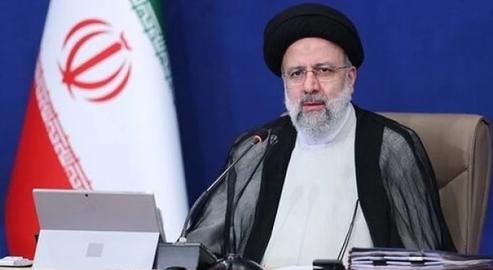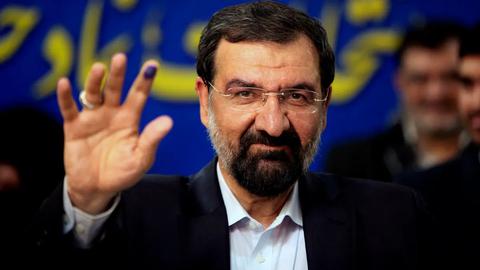All heads of state begin their tenure with big promises, and new President of Iran Ebrahim Raisi did not disappoint. In his first cabinet meeting on August 26, alongside other major goals, he committed to build one million new units of housing across the country.
This particular promise brought back memories of similar ones made by previous chief executives of Iran, which left Iranians with a bad taste in their mouths. The last Iranian president who pledged to build housing on a gigantic scale was Mahmoud Ahmadinejad, but his flagship Mehr Housing Project ended with financial ruin. Yes, tens of thousands of Iranian households succeeded in becoming homeowners. But wider society and the economy is still paying for the damage caused by this project.
Even the wealthiest and the most capable governments in the world tend to stay away from directly involving themselves in housing construction. In no normal country does the government play the role of real estate developer. The state’s role is to build infrastructure, to manage highways and water distribution, electricity and communication networks. The people and the private sector then build houses based on need, according to national and local standards and regulations.
Rather than picking up shovels and picks, states and the Iranian state in particular ought to focus on building a stable economy where housing development will be a win-win game for citizens and investors. But in Iran everyone is a loser save for a small band of well-connected real estate developers. People cannot afford housing, investors do not dare invest, and the banks try to stay away from the mortgage game any which way they can.
In early 2020, the newspaper Donya-e Eghtesad calculated that based on current usual rates of savings, the average Iranian would have to save for 109 years to afford a house in Tehran, whereas in the 1990s the wait stood at around 12 years. What bank in the world would provide a loan that would take more than a century to be paid back? And even if it does, how can a borrower provide guarantees that such an exceedingly long-term loan has a prayer of being repaid?
Iran is fertile ground for inflation and the cash it takes to buy a house now could well be waste paper in 109 years’ time. Deciding mortgages’ rates of interest to the benefit of both buyer and bank is already nightmarish enough after three consecutive years of 40 percent inflation. If the situation does get worse, who is going to pay the banks back for their losses?
In the Islamic Republic of Iran, various successive administrations have failed to establish financial stability in the country and Raisi’s administration is starting on a significant budget deficit. He has no plan to reduce government expenditure, increase revenues or finally and decisively end the biggest political and economic challenge facing Iran: sanctions. Instead, he is hell-bent on building houses.
It’s not clear where the money for this venture is supposed to come from. Nor what will befall the economy if Raisi now forces the banks to fund the project, compensated by the Central Bank. What it is possible to ascertain, however, is what will be needed in terms of land and capital.
Free Land, But Where?
The idea of providing free land for housing has been put forward by various administrations and Raisi is counting on the same. But the only useable brownfield and greenfield land left in Iranian cities is on the margins, and in nearby villages.
In his own manifesto, Rostam Ghasemi, Raisi’s new Minister of Roads and Urban development, explicitly talked about transferring control of lands within city boundaries that belong to the Ministry of Agriculture to his own ministry. Furthermore, he said, he wanted to extend the city boundaries to artificially generate more “free” land for housing.
Years ago Mahmoud Ahmadinejad did the same thing with Mehr Housing Project. The result was hundreds of thousands of useless housing units, badly-built or unfinished and lacking essential services that, at best, were ultimately used as gambling chips in deals between speculators and small investors.
A Mere $91 Billion
“Our estimate is that one square meter of land for housing would cost five million tomans [$1,207],” the secretary of Iran’s Society of Mass Housing Builders told Mehr News Agency last week.
Assuming an average housing unit is 75 square meters, it will then cost around 375 trillion tomans, or close to $91 billion, at today’s official currency prices to build a million of them. The government categorically cannot pay for this out of its own budget. Private sector investors are highly unlikely to endanger their capital by making deals with the government of the Islamic Republic on such a project, instead of investing in more trustworthy private sector developments.
The banks also won’t touch such an endeavor with a ten-foot pole unless they’re compelled to; that is, unless the government and parliament force them to give small loans to buyers and big ones to investors. If so they will need guarantees of repayment with inflation-adjusted sums, or else the Central Bank will have to take responsibility for everything, as it did with Mehr Housing Project, in turn unleashing even worse inflation on more than 80 million Iranians to cover the cost.
Surge in Renting Means Housebuilding Alone Won’t Help
Even if the land problems are resolved and the government manages to acquire the seed capital for the project, if these houses are meant to entice would-be buyers who are currently in the private rented sector, it will be a non-starter. Most tenants have shelled out a fortune to pay private landlords in recent years, while the economy has been battered by sanctions and Covid-19.
Housing shortages are not the issue. Exploitative buy-to-let and rental arrangements are. Vast numbers of new homes have been built over the past 20 years. From 2006 to 2016, the number of new housing units outpaced the increase in the number of households. But the proportion of private rented homes has increased as well: the number of tenant households increased by 3.27 million.
Housing is an investment vehicle in many parts of the world. In Iran, this tendency is turbo-charged; for many years now the principal motive for building, buying and selling housing has been to secure lucrative returns. In the past decade, except at short intervals when the price of the dollar has fluctuated, the average price of a housing unit in Tehran has been fixed at around $1,200.
Under such conditions, development by the government amounts to injecting dollars into an unstable currency market. During a severe market crisis only a small group of speculators benefit. The cost of building a million housing units will be borne by the whole of society.
Iran’s housing crisis is a complex and deep-rooted one that has no quick fix. But it could be resolved, by means of proper economic reforms and regulations aimed at restoring stability to the housing market, but also the wider Iranian economy. When investors both large and small have access to better places to invest, they will ease up on pouring capital into the housing market for all the wrong reasons.
There are enough housing units in Iran. There is no need for the government to build more. Instead of capital, what the Iranian economy needs is an injection of calm: a very rare elixir in the Islamic Republic.
Related coverage:
Record-Breaking Inflation Confronts Raisi's New Presidency
Can Iran Withstand the New Dollar Price Hike?
Most Tehran Residents Will Never be Able to Afford a Home
Would Matchbox Homes Resolve Tehran's Housing Crisis?
Iranians Shocked by the Overnight Devaluation of Their Currency
Iran's Missing Dollars; Who Took Them, and How Much?
Oil, the Dollar and Inflation: How Far Can the Economic Crisis in Iran Go?
Prices in Iran Continue to Soar Despite Better Exchange Rates
visit the accountability section
In this section of Iran Wire, you can contact the officials and launch your campaign for various problems

























comments